Jan Vermeer (Johannes van der Meer; Delft, 1632 - 1675) was one of the leading painters of the Dutch seventeenth century. The subjects of his paintings are mostly bourgeois characters portrayed while serenely performing very simple gestures and actions of daily life, fitting into a rather recurring vein in Dutch art of the time. Rediscovered only in the mid-nineteenth century, he is now considered one of the masters of his time for his innovative use of light in his paintings, conceived in an almost scientific manner, thanks to the interest inoptics that had developed in theNetherlands of the time.
Most notable among Vermeer’s paintings is the genuine beauty of The Girl with the Turban, also known as The Girl with the Pearl Earring (read more about the work and its protagonist here). The story of the making of this famous work became the plot of a book and a successful film released in cinemas in 2003. Vermeer, as mentioned, was rediscovered about two hundred years after his death, after having fallen into oblivion. The scarcity of news and documents about him encouraged the proliferation of authorial forgeries attributed to him in the twentieth century that deceived various collectors and buyers.
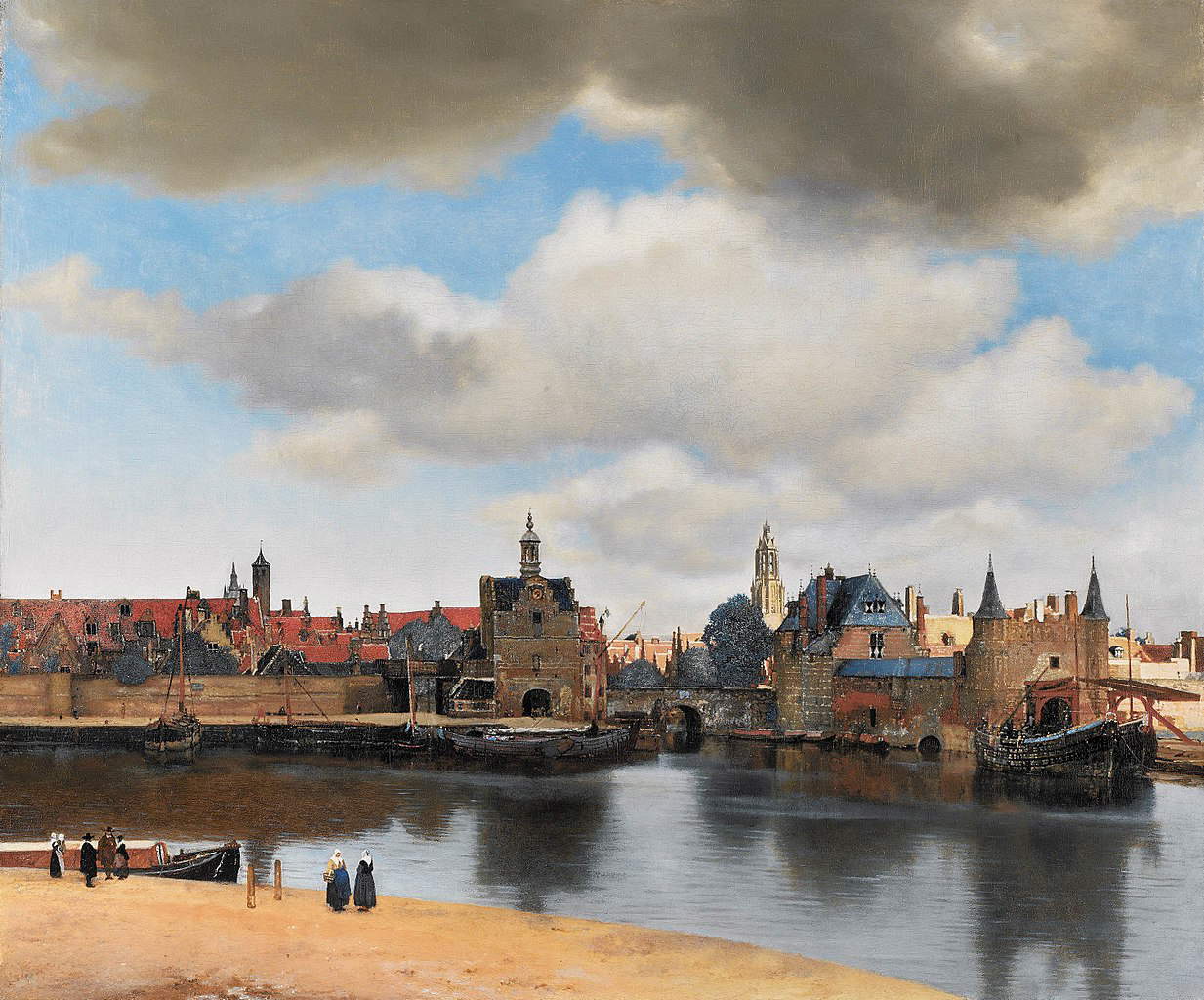
As already anticipated, little is known about Jan Vermeer’s life, gleaned mainly from meager official documents and comments reported by other artists. His hometown, Delft, in South Holland, is known with certainty, and the date of his birth and death can be inferred from records of his baptism, which took place in 1632, and his burial, attested in 1675. So he lived about forty years, and it is said that he devoted his life almost exclusively to painting while remaining very much defiladed from social life and episodes involving his family. Because of this shy character and his dedication to art, he earned the nickname “Sphinx of Delft.” Between 1632 and other reports dating back to 1651 there is a gap of certain information, however, it was possible to trace some episodes. His father was a textile merchant, an art dealer and also bought an inn named “The Flying Fox.” Later, Vermeer’s father left “The Flying Fox” to buy the inn “Mechelen” in Delft’s main market square. Upon his death, the business activities all passed to Vermeer. His family was Protestant, but he married a young Catholic girl, Catherina Bolnes, who was much better off than he was. In fact, following their marriage in 1653, the couple, after a few years in which there is no record of where they lived, moved in together with the children they already had with her mother, who was responsible for supporting the artist financially so that he could pursue his career. Vermeer probably converted to Catholicism, as his children, fourteen in all, were named after saints.
His career as a painter began with an apprenticeship in 1647, believed to be in the workshop of Carel Fabritius, himself a pupil of Rembrandt. There is also confirmed information about Vermeer’s membership in the Guild of St. Luke, in which he was certainly present in 1653. The Guild of St. Luke was a union of artists, artisans, merchants and art lovers named after the saint who, according to Christian tradition, created some depictions of the Virgin Mary and Saints Peter and Paul, and for this reason is considered the patron saint of artists. The guild was based in several cities, including Delft itself, and over the years it was granted the power by local governments to regulate trade in the arts. Among other regulations, it was necessary to belong to the Guild in order to work as an artist or hire apprentices in its workshops, and the Guild was also able to influence the fortunes of particular artists by spreading positive or negative criticism.
Vermeer initially had no way to pay the full membership fee to the Guild, so he paid only part of it, but this changed when a wealthy citizen, Pieter Van Rujiven, became his patron and purchased several of his works. In 1662 Vermeer turns out to be head of the Guild, as well as in the following years, a sign that Vermeer’s name had become very renowned among his fellow citizens. There is also evidence of this in an excerpt from a travelogue by two gentlemen of the time who both report visiting Vermeer’s atelier. About ten years later, in 1672, the situation in Delft changed due to France’s invasion of the Republic of the Seven United Provinces (the future Netherlands), which led to a major financial crisis. At that point, the bourgeoisie was forced to give up luxury goods such as paintings, so the artist again suffered financial problems that plagued him to the end. His wife left written in a document that she considered the cause of her husband’s death to be precisely the stress due to his finances; after all, she inherited several debts and little money from him. Vermeer’s wife was forced to surrender her husband’s house and works to the City Council to pay off the debts, and she kept about nineteen works for herself.
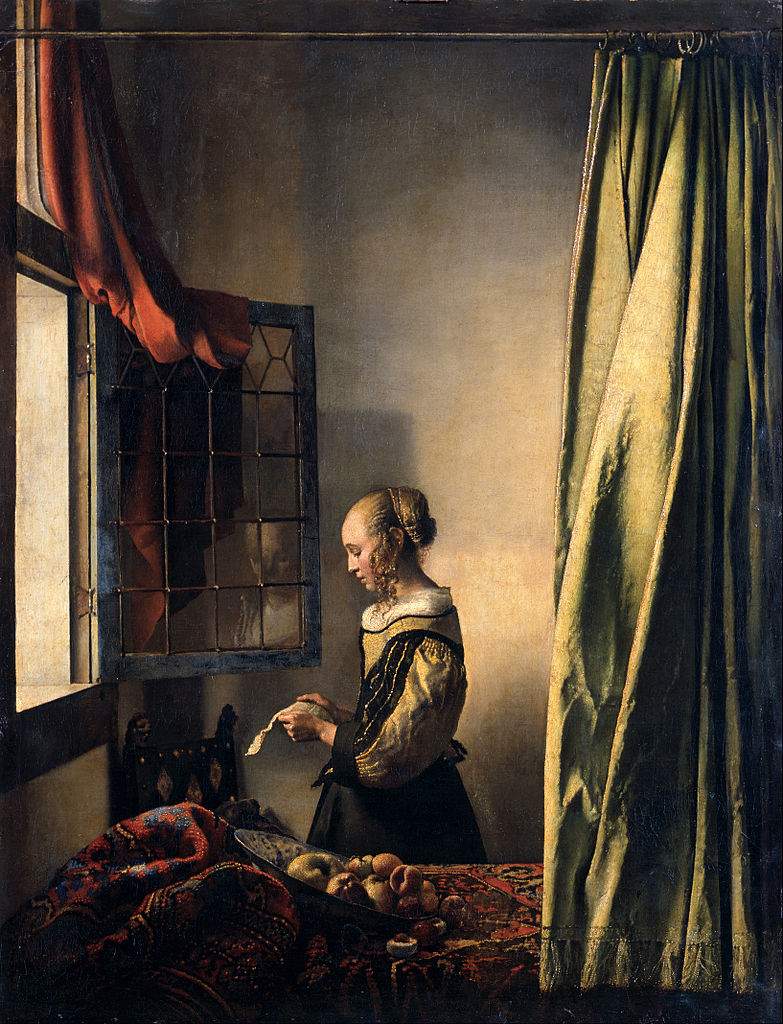
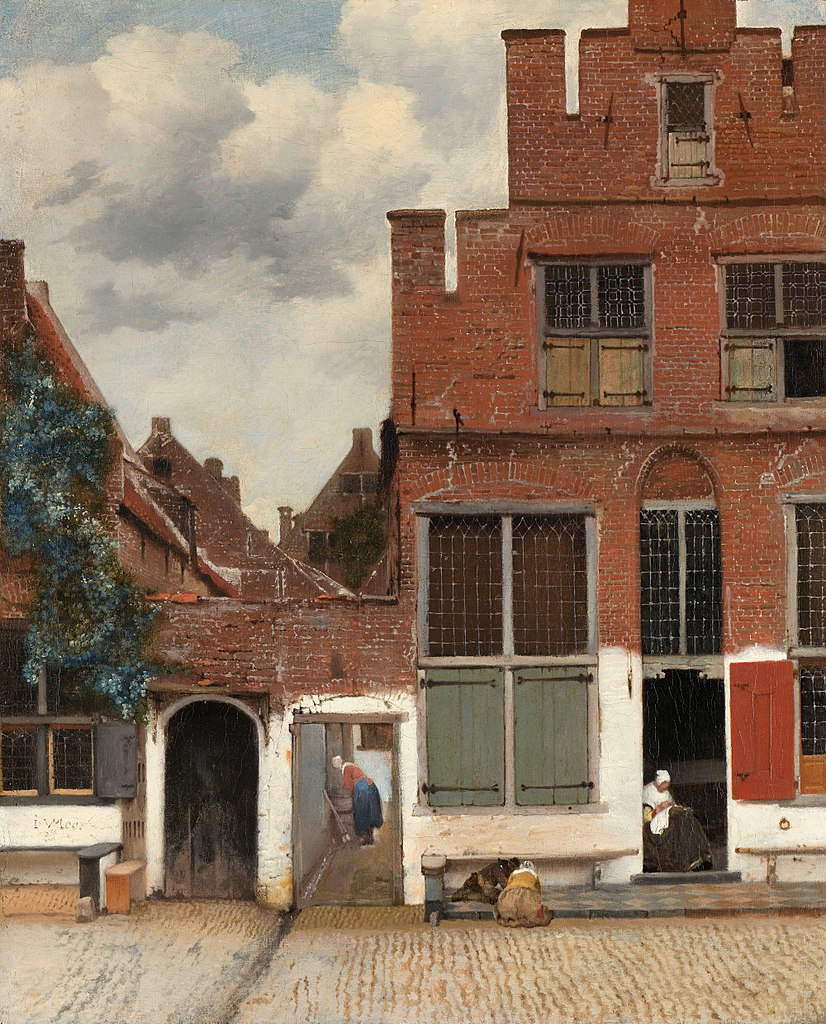
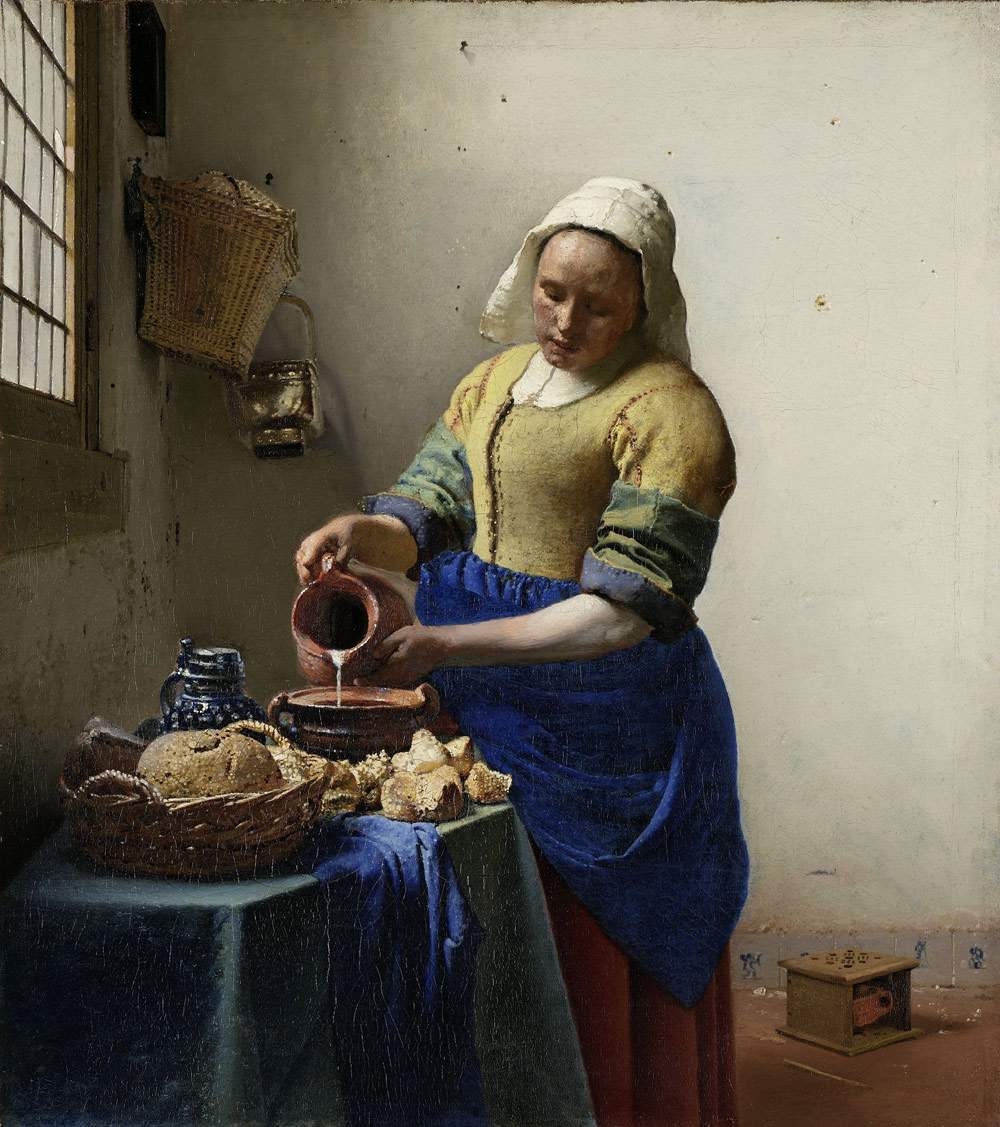
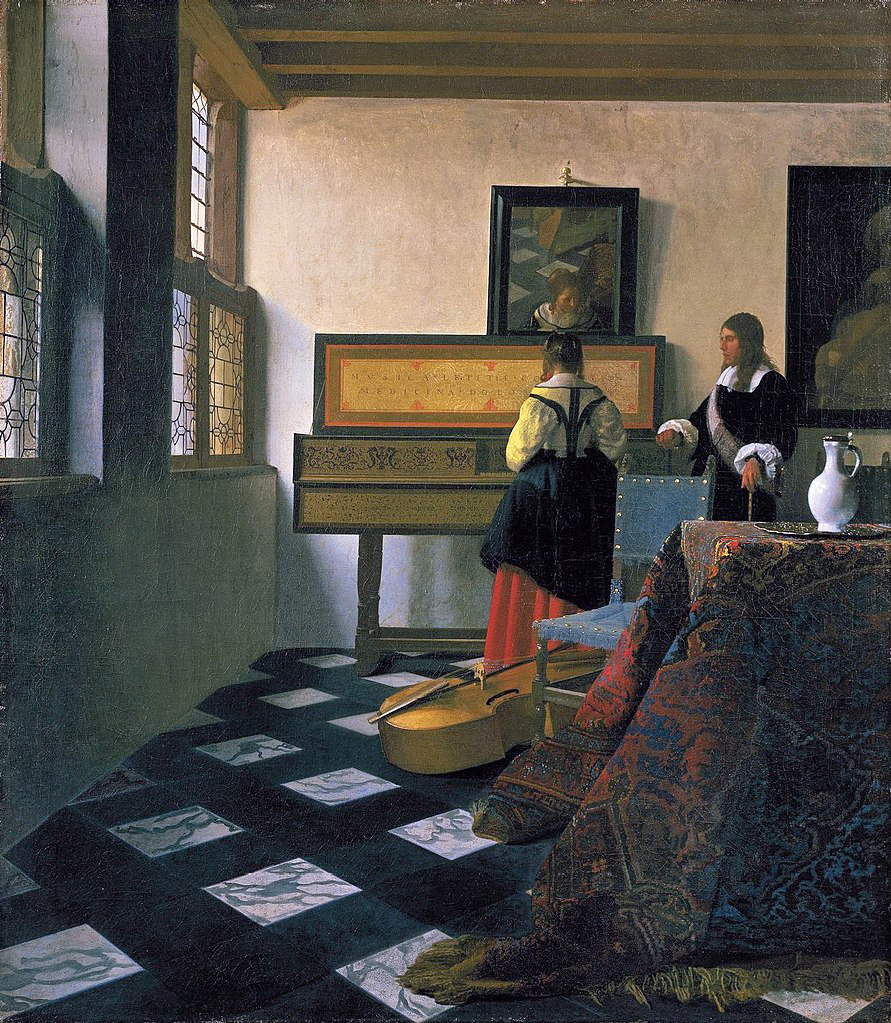
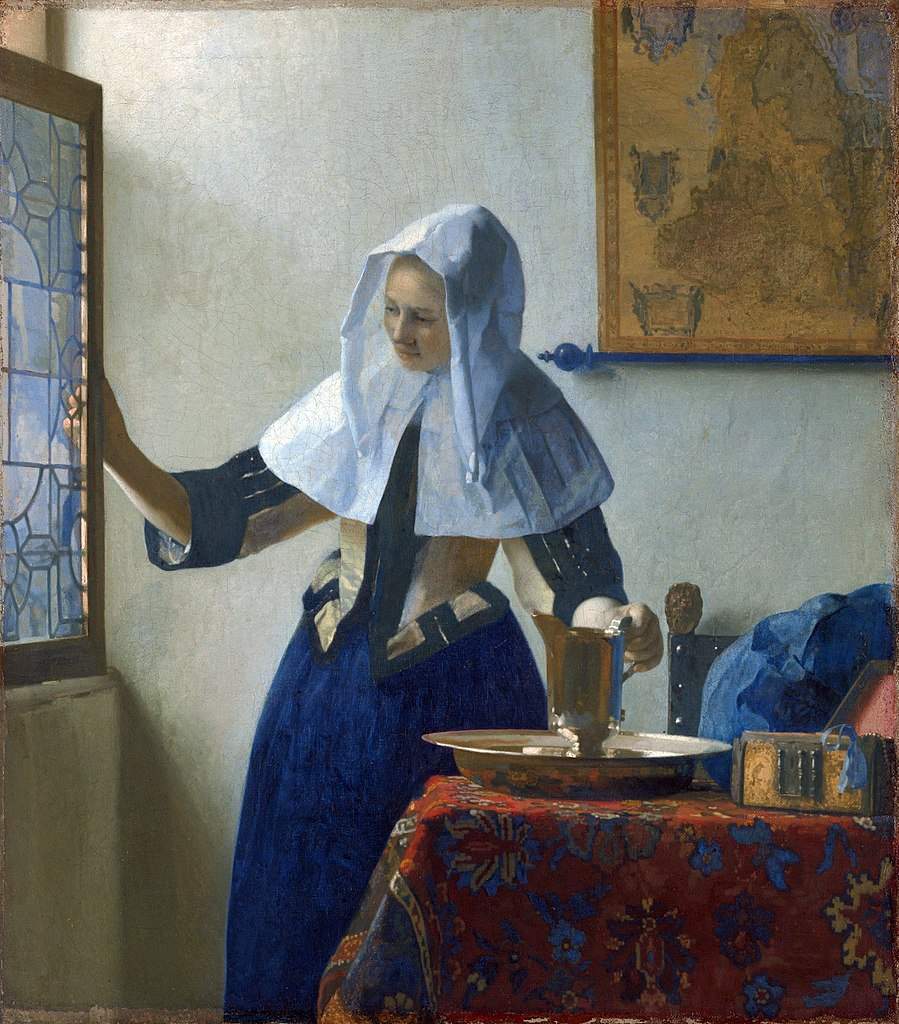
Vermeer painted his pictures using a technique called “pointillism” (not to be confused with the later “pointillism”), which consisted of using color in very small, close brush strokes so that the color itself was almost transparent. Jan Vermeer devoted a great deal of attention to the color itself, seeking out the best oil paints he could find and often making use of highly prestigious materials, such as the very expensive lapis lazuli he used for the blue. Vermeer’s paintings still retain intact the vividness of the colors, due to his frequent use of pure hues. As anticipated, the recurring subject matter in Vermeer’s works are people, mainly women and young girls, portrayed in well-groomed, bourgeois domestic settings, intent on daily chores. But on closer inspection, the human subject is not the absolute protagonist of the painting: in fact, it is framed in a frame whose goal is to depict a natural scene. In a sense, then, when we look at Vermeer’s canvases we are faced with a series of still lifes in which the human element becomes part of the scene itself on a par with the objects.
Thanks to the painting technique used, the scenes in Vermeer’s paintings, although very simple on a narrative level, are vibrant and full of life, framed in a play of light and shadow in which light is reflected from the objects and characters in the painting and modulated according to the effect it actually reproduces in nature in contact with different kinds of materials. In some cases it is even possible to see the representation of moisture in the air.
Vermeer makes a very rigorous use of perspective, in which objects are minimized and placed in judicious balance in the space available. In many paintings it is possible to find recurring framing such as the same glimpse of a small room lit by a window placed in the upper left corner(The Milkmaid, The Astronomer). This may be a reference to his studio, in which the windows were located on the left. The device of using a small, enclosed room as the setting for his works certainly favored a very collected and intimate rendering of the scene depicted, and this is also why it recurs so often.
Among the most famous works are certainly “The Milkmaid” (1658-1660), in which we are presented with a woman who is pouring milk caught in a deeply concentrated expression, giving the simple gesture she is performing an aura of sacredness. The room is immersed in a rarefied silence, while the objects on the table seem so real that they seem as if they were actually in front of us and not in a painting.
Jan Vermeer’s most successful work is The Girl with the Turban or The Girl with the Pearl Earring (1665-1666) referred to as “The Dutch Mona Lisa.” Here we see a depiction of a young girl set against a dark background, which brings out her surprised expression, as if she is about to speak after being interrupted in doing something. The background makes the famous earring shine and the light shades of her clothes, which are reminiscent of the typical clothes of sibyls or classical muses, but which in reality finds no correspondence at the iconographic level. The young woman’s earring is masterfully painted with the usual small, close touches of color, which to a more general gaze appear to be a single brushstroke and enhance the precious luminosity(read an in-depth discussion of Vermeer’s technique in this painting here).
Thus we are left with only paintings on canvas by the artist; no drawings have been found, nor is it possible to trace preparatory drawings on the canvases. This detail can be justified by a theory developed by the painter David Hockney, together with the U.S. physicist Charles Falco, who analyzed the extensive use of optical instruments typical of Dutch painting: preparatory drawings were thus replaced by the use of the camera obscura, which made possible a very faithful reproduction of reality. The use of this tool, could be further confirmed by the particular focus of Vermeer’s paintings, which, for all intents and purposes as happens in photography, proposes some elements presented very sharply, and others brought into less focus.
Vermeer’s critical fortune is much later than his death, he was in fact studied and rediscovered in the 19th century by the French scholar Théophile Thoré-Bürger, also known as William Burger as he called himself for a time. He, a political journalist but also an art critic, was thunderstruck in front of a Vermeer painting entitled The View of The Hague and wanted to go in search of the Dutch artist’s entire output. Trying to reconstruct all his works, he also came across some forgeries attributed to Vermeer that fooled him. There are, moreover, numerous works produced by other artists and then mistakenly believed to be Vermeer’s signature, a phenomenon that was rampant especially in the 20th century and led to the purchase of numerous forgeries in the wake of a newfound interest in the painter that brought him to international prominence. In fact, a Dutch forger painter named Han van Meegeren, who lived between the late 1800s and the first half of the 1900s and who was passionate about Vermeer, succeeded in replicating his distinctive features first of all by using exclusively tools dating back precisely to the 1600s, and then by powder coating the newly finished paintings so that the characteristic cracks would form and give the impression that they were really old; finally, he chose in a very astute way to make not copies of already existing works but actual unpublished paintings. The result was a series of 6 works so superimposable on the Dutch master’s style that no one at the time could tell the difference and was convinced that they had purchased an authentic Vermeer. He even managed to fool De Vild, author of an essay on Vermeer himself. The forger confessed the truth when, in 1945, at the conclusion of World War II, he was arrested and tried for collaborating with the Nazis, to whom he had sold two paintings. Then, to exonerate himself, he claimed to be a forger and demonstrated his skill by painting live during a trial, following which he was sentenced to one year in prison while avoiding life imprisonment.
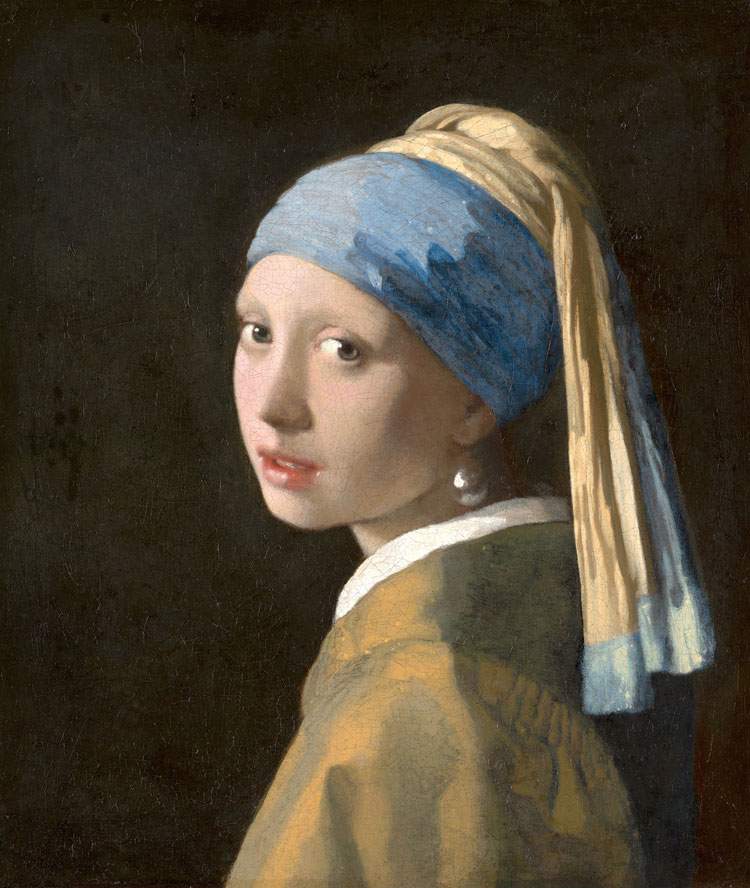
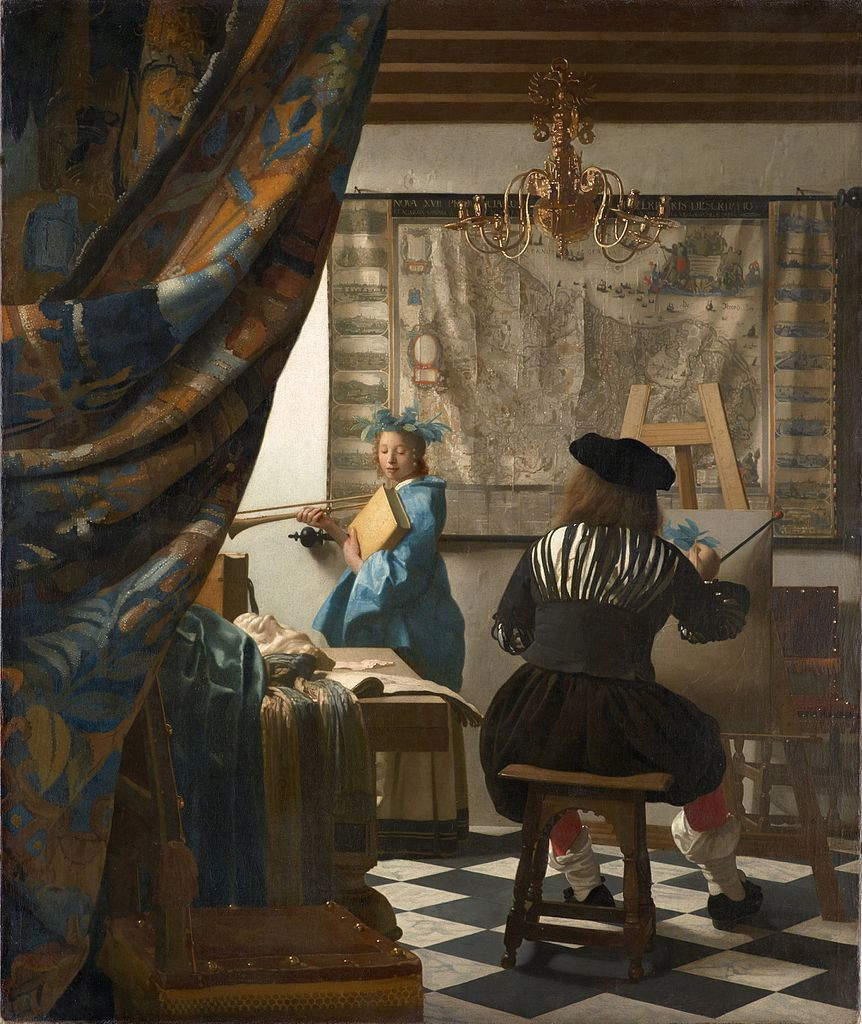
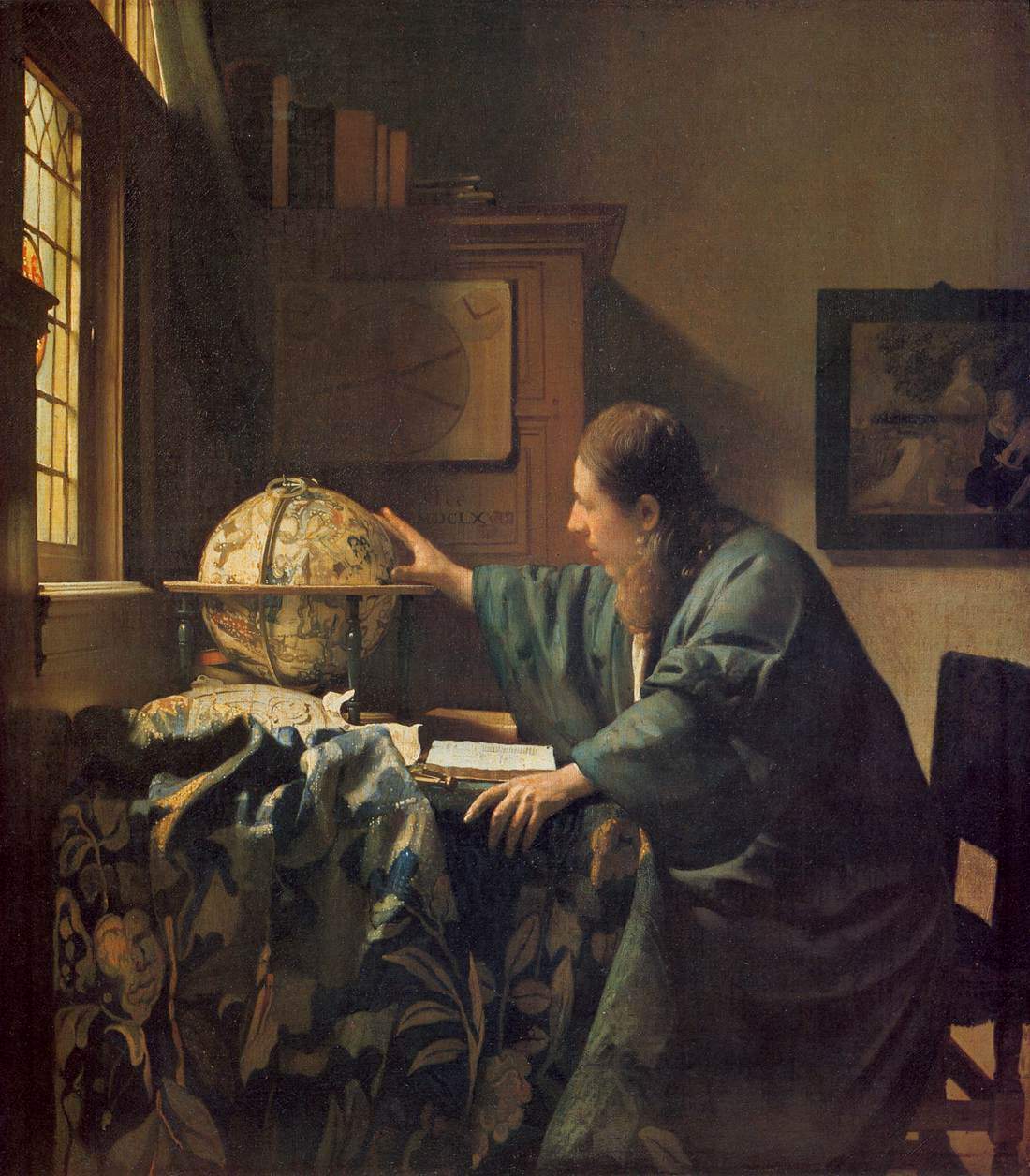
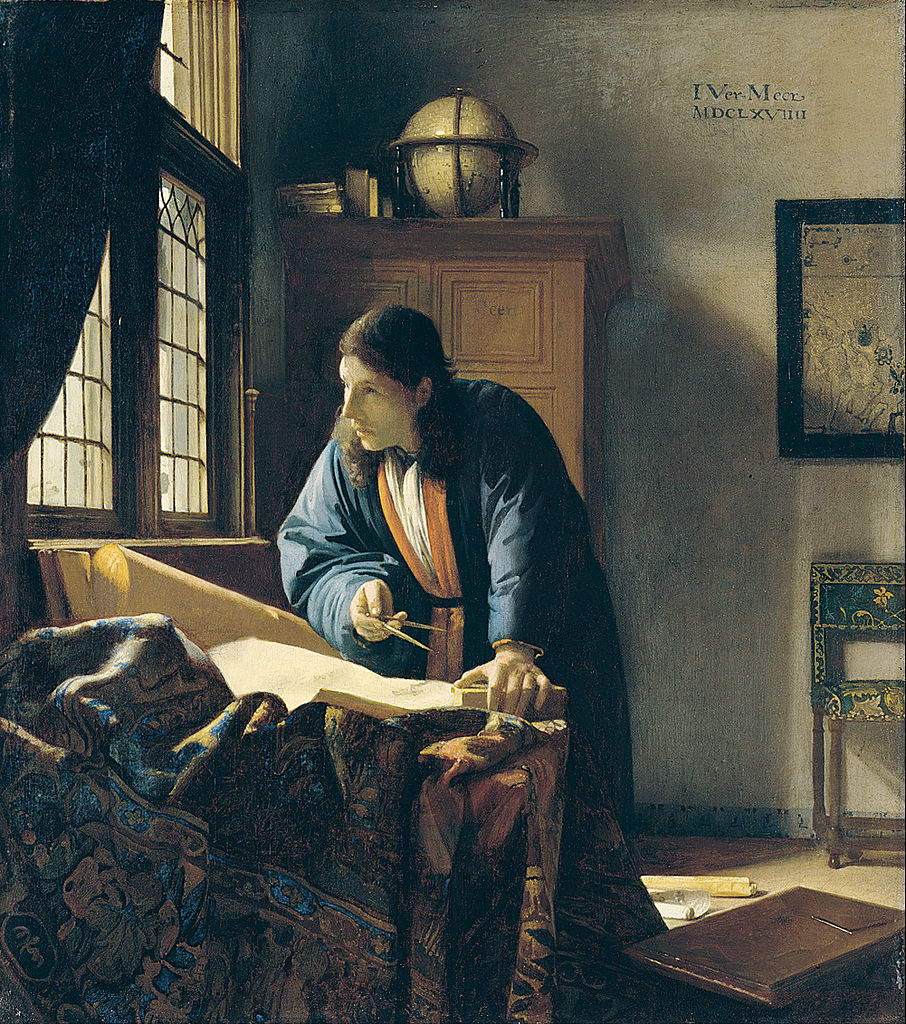
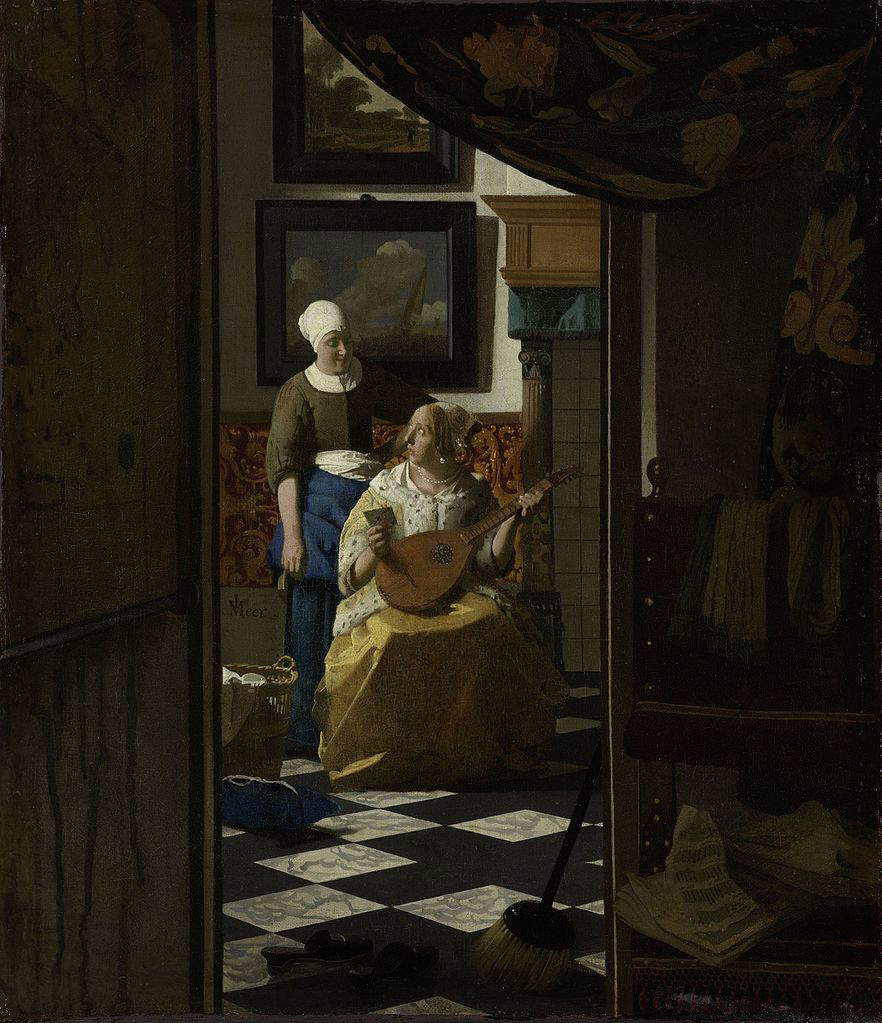
As discussed in more detail above, Vermeer’s pictorial output is not very extensive, due to the long oblivion suffered by the author and the subsequent spread of authorial forgeries. The works definitely attributed to the painter can be found in his native Netherlands, divided between the Mauritshuis Museum in The Hague (where The Girl with the Turban or The Girl with the Pearl Earring is housed) and the Rijksmuseum in Amsterdam (where The Milkmaid can be seen). Other paintings can be seen in Europe, specifically in Germany (in Dresden, the Gemäldegalerie in Berlin, Frankfurt) the Louvre in Paris and Vienna. Other works by Vermeer can also be seen in London, New York (Metropolitan Museum of Modern Art) Washington and Boston.
In Italy there are no Vermeer’s works found in museums, but the artist has been the protagonist of some retrospectives dedicated to him, such as Vermeer. The Golden Century of Dutch Art held at the National Gallery of Modern Art in Rome between 2012 and 2013, and the exhibition of The Girl with the Pearl Earring at the Palazzo Fava in Bologna in 2014, the first time the painting was admired in Italy.
 |
| Jan Vermeer, life, style and works of the great Dutch painter |
Warning: the translation into English of the original Italian article was created using automatic tools. We undertake to review all articles, but we do not guarantee the total absence of inaccuracies in the translation due to the program. You can find the original by clicking on the ITA button. If you find any mistake,please contact us.